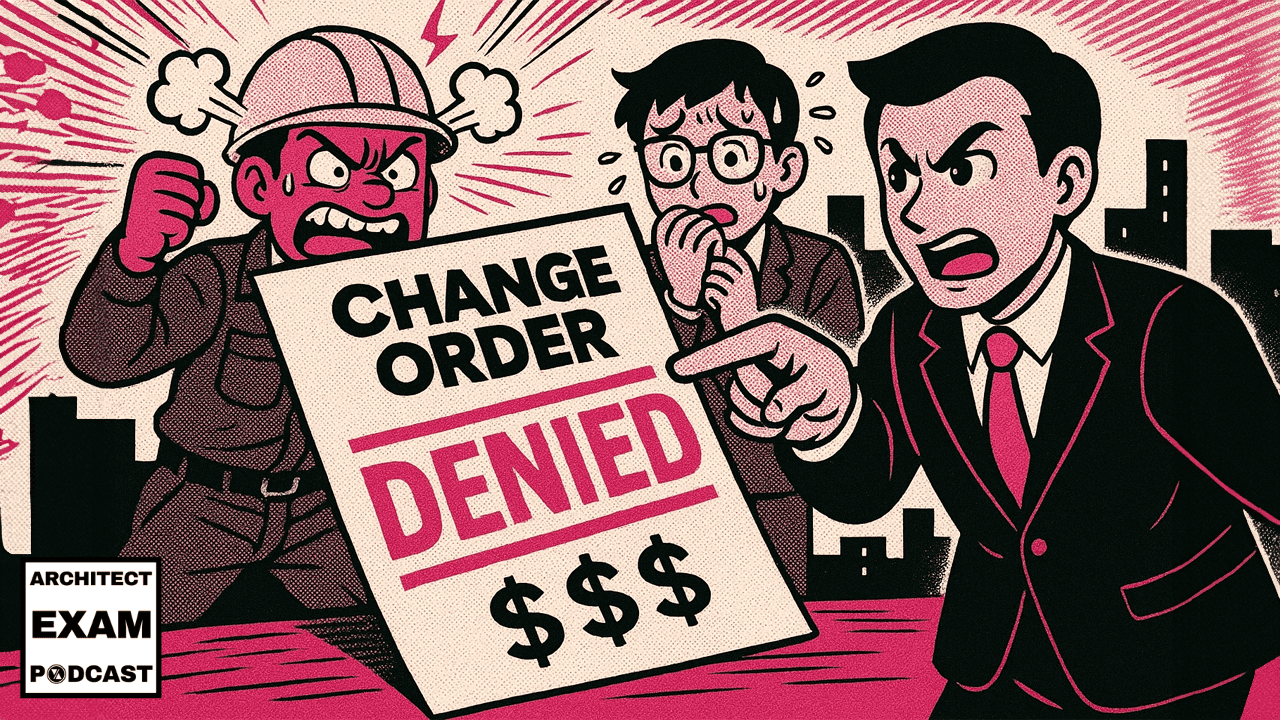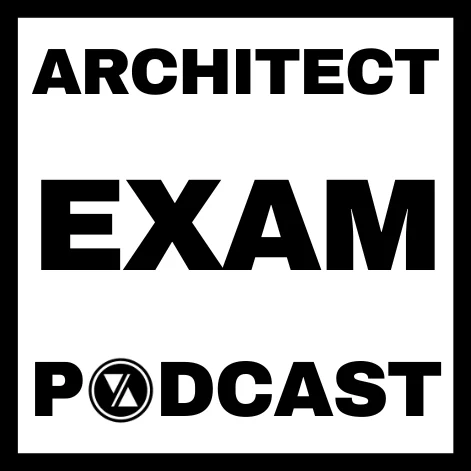Construction claims and disputes are inevitable realities that every AEC professional will encounter. This is when there are issues on a project that get escalated to the point where we need third parties to weigh in to resolve them. Understanding how to prevent, navigate, and resolve these challenging situations through effective dispute resolution methods is essential for protecting your career, your projects, and your professional relationships in the construction industry.
Imagine this:
You’re six months into what started as a straightforward office building project.
The owner just discovered that the structural drawings don’t match the architectural plans, the contractor is demanding additional payment for “unforeseen conditions,”.
Your phone won’t stop ringing because everyone wants answers you don’t have, and somehow you’ve become the construction industry’s version of a Magic 8-Ball, except all your responses are “Ask again later.”
Sound familiar? Welcome to the world of construction claims and disputes.
Here’s the reality nobody talks about in architecture school:
Every construction project will face some form of construction claim or dispute.
It’s not a matter of if, but when. The difference between professionals who thrive and those who barely survive often comes down to one thing – how well they handle these messy situations when they inevitably arise.
Whether you’re preparing for your ARE exam, studying for your CDT certification, or already working in the field, understanding claims and disputes isn’t just helpful – it’s career insurance that works alongside proper business entity protection for architects.
These concepts appear frequently on licensing exams, they’re essential for professional advancement, and frankly, they’re the situations where your expertise gets tested in the real world.
The good news?
Construction claims and disputes are predictable and manageable when you understand the common patterns, what causes construction disputes, the true costs, and proven resolution methods.
Let’s dive into what you need to know to protect yourself, your projects, and your professional relationships when things get messy.
What Are Claims and Disputes?
Before we can effectively handle claims and disputes, we need to understand exactly what they are. Too often, these terms get thrown around interchangeably, but they represent different stages of project conflict.
Understanding Claims
A construction claim is a written request or demand with supporting documentation that’s submitted as a right under a contract. Think of it as a formal “we need to talk” backed up with paperwork and legal standing. For a construction claim to be valid, you generally need to demonstrate three key elements:
- Entitlement: You have a contractual right to what you’re requesting
- Causation: You can show how the other party’s actions (or inactions) caused your issue
- Quantum: You can quantify the specific amount of damages or compensation sought
- Notice: You provided proper notice as required by the contract
Claims typically involve formal processes with specific notice periods and documentation requirements.
For example, when a contractor and owner can’t resolve a change order disagreement through normal project channels, and the contractor formally seeks additional compensation, that becomes a construction contract claim.
When Claims Become Disputes
A construction dispute occurs when a construction claim can’t be resolved without bringing in third-party mediation or intervention. It’s essentially the difference between “we need to talk” and “my lawyer will be calling you.” Construction disputes represent a formal impasse between contracting parties and often signal a breakdown in project-level communication.
Construction disputes may involve multiple claims bundled together and require more formal resolution processes as defined in the contract documents.
The critical distinction here is that construction claims can exist without disputes, but disputes always involve unresolved claims.
What Claims Are NOT
Understanding what construction claims are not is equally important:
Construction claims are not simply demands without contractual basis. We call that something else – demands without legal standing, or in plainer terms, robbery with paperwork instead of getaway cars!
They’re not routine contract modifications that parties agree to, standard change orders, or simple notifications of issues (which should happen before claims arise). Most importantly, claims are not automatic indications of bad faith by any party.
Construction claims happen even on well-run projects with good people.
Prevention: Your Best Defense Strategy
The best way to handle claims and disputes is to prevent them from happening in the first place. Prevention is always cheaper than resolution after the fact, and it preserves the professional relationships that keep our industry functioning.
But before we dive into prevention strategies, let’s understand the most common claim patterns you’ll encounter.
Common Claim Patterns
Understanding who typically claims what helps with both prevention and early identification of potential issues:
Claims Against Architects: These common construction disputes include:
- Architect professional liability and errors and omissions
- Design errors and specification writing mistakes and document coordination failures
- Design deficiencies (systems not performing as intended)
- Schedule-related issues (slow submittal approvals, delayed RFI responses)
- Architect negligence claims often stem from failure to meet the standard of care
Against Contractors:
- Workmanship problems (failure to meet specifications)
- Construction delay claims (schedule failures, poor trade coordination)
- Performance issues (testing failures, warranty problems)
- Construction contract administration failures
Contractor Claims Against Owners:
- Payment delays and retention issues
- Site access restrictions
- Information delays and scope changes
- Excessive project interference
You know that friend who stands over your shoulder while you cook and suggests “improvements”? Imagine that, but they’re paying you millions – except instead of ruining dinner, they’re ruining your entire year and possibly your will to live.
Other Common Sources:
- Subcontractor pass-through claims
- Material supplier issues
- Adjacent property owner complaints involving construction defect claims
Now that you understand the patterns, here’s how to prevent them:
The Real Cost of Claims and Disputes
The costs of claims and disputes go way beyond just the settlement amount. Like an iceberg, most of the damage sits below the surface where you can’t see it coming.
Direct and Indirect Financial Impact
Legal fees range from $300 to $800 per hour. At those rates, you’d think they’d at least bring coffee and donuts to the negotiations! Or maybe throw in a kidney since you’ll probably need to sell one to pay them. Additional costs include:
- Internal staff time dedicated to claim preparation
- Expert witness fees ($200 to $500 per hour)
- Administrative costs for document management and e-discovery
The settlement or judgment typically runs 5 to 15 percent of the contract value – and that’s before adding all the supporting costs.
Project delays create:
- Extended overhead costs (5 to 15 percent of direct costs)
- Acceleration expenses
- Lost opportunity costs
- Inflation effects on long-delayed projects
Team productivity takes a major hit:
- Management gets distracted from current projects
- Efficiency drops due to documentation requirements
- Staff time gets diverted to claim support
- Stress and burnout can lead to turnover
Suddenly everyone’s a legal expert instead of doing their actual jobs. Your structural engineer is now quoting contract law like it’s the building code, and your intern thinks “discovery” is a new Netflix series.
The administrative burden includes:
- Document retrieval
- Depositions
- Discovery requests
- Endless strategy meetings
Relationship and Long-Term Costs
Professional relationships suffer, leading to loss of repeat business, difficulty partnering on future projects, strained negotiations, and impacts on professional references.
Nothing says ‘let’s never work together again’ quite like a three-year litigation process. It’s like the construction industry’s version of a bad breakup, except with more paperwork and higher bills.
Team morale and collaboration deteriorate as an adversarial atmosphere replaces cooperation, defensive documentation practices emerge, information sharing decreases, and the focus shifts from project success to claim positioning.
Resolution timeframes vary dramatically: negotiation (1-3 months), mediation (3-6 months), arbitration (6-18 months), and litigation (1-5 years).
These extended timelines create cascading delays affecting project completion, occupancy, and other stakeholders.
Prevention: Your Best Defense Strategy
The best way to handle claims and disputes is to prevent them from happening in the first place. Prevention is always cheaper than resolution after the fact, and it preserves the professional relationships that keep our industry functioning.
Now that you understand the patterns, here’s how to prevent them:
Documentation and Communication: Your Foundation
The golden rule is simple: document everything as it happens, not after the fact. Trust me, your memory after six months will convince you that you were completely reasonable and everyone else was being difficult – funny how that works!
It’s like selective amnesia, but for professional disputes instead of embarrassing college stories.
Essential documentation practices include:
- Detailed daily reports (weather, workforce, deliveries, work performed)
- Prompt meeting minutes with clear action items
- Time-stamped photographs and videos of key activities
- Centralized email management with proper and consistent naming of subject lines
- Real-time as-built tracking
Effective communication requires:
- Regular project meetings with documented decisions
- Structured RFI processes with clear response times
- Early notification policies (“no surprises”)
- Written confirmation of verbal discussions
- Project dashboards highlighting potential risks
Precise language and avoiding ambiguity form the foundation of claim prevention. Use specific terms, define terms consistently throughout your documents, and specify exact requirements rather than leaving things open to interpretation.
Create comprehensive scope definitions with detailed descriptions of included and excluded work. Clearly define boundaries between trades and address potential overlaps or gaps before they become problems on-site.
Well-defined change management procedures are crucial. Establish specific processes for requesting, documenting, and approving changes, with clear time limits and format requirements. It’s like planning a dinner party and then your spouse invites 20 more people five minutes before it starts – you need a system for handling those curveballs.
Realistic schedule requirements include adequate float for critical activities, reasonable durations, and clear definition of critical path milestones. AIA contracts like A201 and B101 provide industry-standard frameworks for dispute resolution and risk allocation, which is why understanding these documents is so important.
Effective Communication Practices
Regular project meetings with documented minutes help track decisions and action items. Distribute information to all relevant parties and follow up on outstanding issues before they escalate.
Implement a structured RFI process with a clear tracking system, response time requirements, and documentation of decisions and rationale. Think of RFIs as the construction world’s version of “Can you clarify what you meant by that text?” except instead of relationship drama, it’s million-dollar drama.
Early notification through a “no surprise” policy among the project team helps address problems before they escalate. Document verbal discussions in writing and use project dashboards or status reports with regular updates on schedule, budget, and quality while highlighting potential risk areas.
Documentation Best Practices Are Absolutely Critical
Create detailed daily reports that include weather conditions, workforce numbers, material deliveries, and work performed.
Distribute detailed meeting minutes promptly, documenting attendees, discussions, decisions, and tracking action items.
Use photographs and videos to document work before, during, and after key construction activities with time-stamped images. Manage emails and correspondence through a centralized system with proper subject line conventions and written confirmation of verbal discussions.
Keep as-built documentation with real-time tracking of changes from design documents, regular updates, and verification by responsible parties.
The golden rule here is simple: document everything as it happens, not after the fact. Trust me, your memory after six months will convince you that you were completely reasonable and everyone else was being difficult – funny how that works! It’s like selective amnesia, but for professional disputes instead of embarrassing college stories.
Proactive Claim Resolution Action Plan
Create your claim resolution plan before you need it, not during a crisis. Proactively identify potential claim areas through risk assessment during preconstruction and regular reviews during construction.
Designate team members for claim management with clear roles, proper training, and a decision-making authority early on.Establish review processes with regular timelines for evaluating potential claims, multi-level review, and documentation standards.
Identify alternative resolution methods in advance with step-by-step escalation procedures, timeframes, and available resources.
When Prevention Fails: Your Resolution Roadmap
Even with the best prevention efforts, construction disputes still happen. Here’s your roadmap for navigating alternative dispute resolution, which follows a sequential approach escalating in formality and cost:
Good Faith Negotiations:
- Direct party-to-party resolution without third parties
- Often required by contract before escalation
- Benefits include preserved relationships, lowest cost, and fastest resolution (weeks to months)
- Success requires open communication, focus on project success rather than blame, and willingness to compromise
Construction Mediation:
- Brings in a neutral facilitator who doesn’t impose decisions
- Timeline runs 1-3 months with costs of $5,000-$15,000 for straightforward claims (shared between parties)
- Mediation vs arbitration shows mediation resolves approximately 80% of construction disputes
- Non-binding – parties must agree to any resolution
Construction Arbitration:
- More formal with arbitrators rendering binding decisions
- Timeline runs 6-12 months with costs of $20,000-$100,000+ depending on complexity
- Features include limited appeals, industry-experienced arbitrators, and binding decisions enforceable like court judgments
Construction Litigation:
- Involves the full court process with judges or juries
- Process takes 2-5 years with costs of $100,000+ even for modest claims
- The public nature creates public records and significant resource drain on company personnel
Key Legal Principles You Need to Know
Understanding these legal frameworks helps you navigate construction claims and disputes more effectively:
Spearin Doctrine: Essential for Design Professionals
The Spearin Doctrine is a fundamental legal principle from the 1918 Supreme Court case United States v. Spearin. It creates an implied warranty that when owners provide detailed plans and specifications, those documents will be adequate and suitable for their intended purpose.
How it works: If a contractor follows the design exactly and problems arise due to design flaws rather than construction errors, the responsibility typically falls on whoever provided the defective design documents.
Example: A contractor builds a foundation exactly to the structural drawings, but it cracks due to an engineering error in the design calculations. Under Spearin, the contractor isn’t responsible for redesign and repair costs – that falls on the design professional who provided the flawed plans.
Key limitations: The Spearin Doctrine doesn’t protect contractors who deviate from plans, ignore obvious design errors, or work under performance specifications where they have design responsibility. It’s also why comprehensive architect professional liability insurance coverage is essential for protecting against design liability claims – Spearin can shift significant financial responsibility to design professionals when their documents contain errors.
The doctrine applies differently across project delivery methods and varies by state, making it essential knowledge for both ARE and CDT candidates.
Project Delivery and Risk Allocation
Different delivery methods create different claim patterns, especially when comparing public sector projects versus private client relationships.
Design-Bid-Build has clear separation leading to more design-related claims. Design-Build provides single-point responsibility with different claim patterns. Construction Manager at Risk involves shared responsibility creating complex responsibility matrices.
Risk transfer mechanisms like indemnification clauses vary significantly by state due to anti-indemnity statutes, insurance coverage restrictions, and enforceability issues. Always consult local legal counsel familiar with your jurisdiction’s requirements.
Key Takeaways for Your Career
Three fundamental principles can guide your approach to claims and disputes:
Prevention is Everything
Address issues early before they become formal claims – it’s always cheaper than resolution. Document everything as it happens, not after the fact, because your memory will be unreliable months later.
Relationships Matter
Maintain professional relationships even during disagreements because the construction industry is smaller than you think. Focus on project success rather than “winning” disputes.
Develop Your Skills Now
Risk management and claims knowledge enhance your value to employers and clients. Understanding business entity protection demonstrates professionalism and leadership that benefits your long-term professional reputation.
The Bottom Line
Construction claims and disputes are business realities, but they’re manageable with proper preparation and a professional approach. And always remember: The only real winners in extended disputes are the lawyers who send their kids to college on your legal fees!
ARE Exam Relevance: Essential Knowledge for Licensing
Construction claims and disputes concepts appear frequently across multiple ARE exam divisions, making this knowledge essential for licensing candidates.
Key Exam Topics
Risk management strategies, architect professional liability insurance requirements, construction contract language and dispute resolution clauses, change order processes and documentation, construction administration responsibilities and limitations, communication protocols and documentation standards, quality control procedures, and construction observation responsibilities.
Essential AIA Documents
A201 (General Conditions) forms the backbone of construction relationships and defines dispute resolution procedures. B101 (Owner-Architect Agreement) defines the architect’s scope, standard of care, and liability limitations.
Study Focus Areas
Construction contract language interpretation, professional liability concepts, change order processes, and construction administration best practices. Understanding these construction claims and disputes concepts is critical for both exam success and professional practice.
Wrapping Up: Your Action Plan Forward
Claims and disputes are inevitable realities in construction, but they’re manageable with proper preparation and a professional approach. Prevention through clear documentation and proactive communication remains your most powerful tool for avoiding disputes.
Understanding resolution methods helps you navigate challenging situations and advance your career. Effective risk management skills distinguish successful professionals and firms. Focus on project success and maintaining relationships rather than “winning” individual battles.
Whether you’re studying for licensing exams or managing active projects, these concepts form the foundation of professional practice. Start implementing documentation best practices on your current projects, review your contracts to understand the dispute resolution procedures, and develop proactive communication habits that prevent issues from escalating.
Consider these skills as essential professional development, not just exam knowledge. The investment you make in understanding claims and disputes will pay dividends throughout your entire career in the construction industry.
Ready to take your architecture career to the next level? Explore our comprehensive ARE 101 courses and CDT 101 certification program designed to help you master these essential concepts and advance your professional development.



